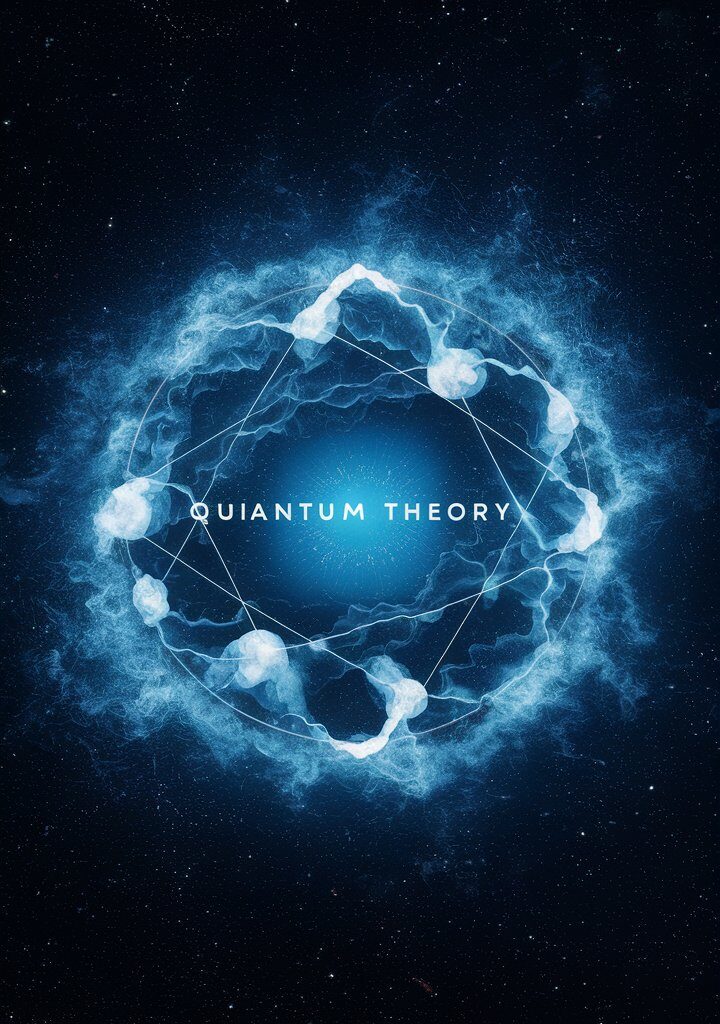Quantum Theory
What is Quantum Theory?
Quantum theory, or otherwise popularly known as quantum mechanics or quantum physics, is a core physics framework which describes the behavior of the smallest particles in discrete energy values or levels. It has been since one of the cornerstones of modern science, changing the way we understand the universe—from its very smallest subatomic parts to the vast cosmos. In this article, we will introduce the key concepts in quantum theory, making it accessible for physics enthusiasts who are ready to jump-start their understanding into this extremely interesting science branch.


Origin and Development
Quantum theory was born in the early twentieth century. Opposed to classical physics, which had dominated scientific thought since the time of Isaac Newton, this new theory was built on the pioneering work of physicists such as Max Planck, Albert Einstein, Niels Bohr, and Erwin Schrödinger.
Max Planck and the Quantum Hypothesis
In 1900, Max Planck published the idea of quantized energy levels while attempting to resolve the black-body problem. In his solution, he assumed that this energy was radiated and absorbed in pieces or chunks, as he termed them, “quanta.” This is the piece that became a breakthrough idea ultimately leading up to quantum theory. Planck was granted the Nobel Prize in Physics in 1918 for this valuable work.
Einstein's Photons
In 1905, quantum theory was advanced by Albert Einstein, who explained the photoelectric effect, postulating that light is composed of particles which, like atoms, have a quantum-linked amount of energy connected with them and can be called photons. Indeed, this piece of work not only showed that energy was quantized but had also brought out very serious views on the wave-particle duality for light.
The Bohr atomic model
In the year 1913, Niels Bohr constructed the first quantum model of an atom based on Planck’s quantization principle and ideas of discrete energy levels. In its turn, the Bohr’s model became at issue when explaining the discrete spectral lines observed in atomic spectra and showed a way of understanding the very basics of atomic structure.
Key Concepts of Quantum Theory

1. Wave-Particle Duality
Wave-particle duality, one of the central tenets of quantum theory, states that particles, such as electrons and photons, may at times exhibit both particle-like and wave-like behaviors. In other words, they can behave sometimes as discrete packets of energy, or waves—like ripples in a pond—with respect to their nature, depending on the experimental setup.
2. Uncertainty Principle
Presented by Werner Heisenberg in 1927, the uncertainty principle is considered generally as a physical principle by which it is impossible to be known simultaneously with infinite precision the exact position and momentum of a subatomic particle—that is, both the velocity and direction of motion. This inherent uncertainty arises due to the wave-like nature of particles and sets fundamental limits on what we can measure in the quantum realm.
3. Quantum Superposition:
Quantum superposition is a phenomenon where the existence of a certain particle can be in superimposed states or at different positions simultaneously. A very powerful way of illustrating this concept is through Schrödinger’s thought experiment on a cat, where the cat was described as being alive and dead at the same time before observation. It highlights the probabilistic nature of quantum systems and challenges our classical intuition.
4. Quantum Entanglement
Quantum entanglement is that state of particles in which two or more get correlated in such a way that the state of one particle is instantly influenced by another, irrespective of the distance between them. Surely, this “spooky action at a distance,” as Einstein put it, is actually a corpse characteristic of quantum mechanics, which holds deep implications for quantum computing and cryptography.
Quantum computing

1. Applications of quantum theory:
Quantum computing uses principles of quantum mechanics to engineer new ways of processing information. State-of-the-art quantum computers have the potential to solve some problems way faster than classic computers and hold a potential for revolutionizing everything starting from cryptography to drug discovery.
2. Quantum Cryptography
Quantum cryptography exploits principles of quantum mechanics to sustain secure channels of communication of absolute security against any hacker. One of the operational principles is quantum entanglement, which allows the transmission of cryptographic keys with unbeatably perfect security.
3. Quantum Sensors and Metrology
Quantum sensors provide a very powerful way to do very fine measurements, which make them applicable for applications such as navigation, imaging, and gravitational wave detection. They push the limit of sensitivity and accuracy.
4. Future Directions and Challenges
Quantum theory stands at the frontier of scientific research today. Much effort is made to understand it deeper and exploit all its potential. Many technical problems, like scaling up quantum systems, reducing error rates in quantum computations, or developing practical quantum algorithms, have yet to be solved.
Conclusion
Quantum theory has been a huge departure in our understanding of nature at small scales. From wave-particle duality to quantum entanglement, its concepts challenge classical intuitions and open doors to transformative technologies. Embracing the principles of Quantum Theory as students of science doesn’t just make us know something; rather, it broadens our intellectual horizons and readies us for the daunting job ahead: fixing those convoluted problems tomorrow’s world is sure to bring. Quantum mechanics is not a theory alone; it is the doorway to the future where today’s impossible might become possible.
 Skip to content
Skip to content
